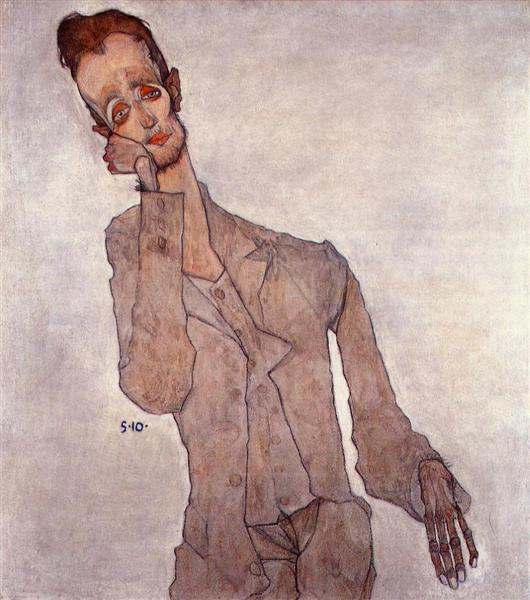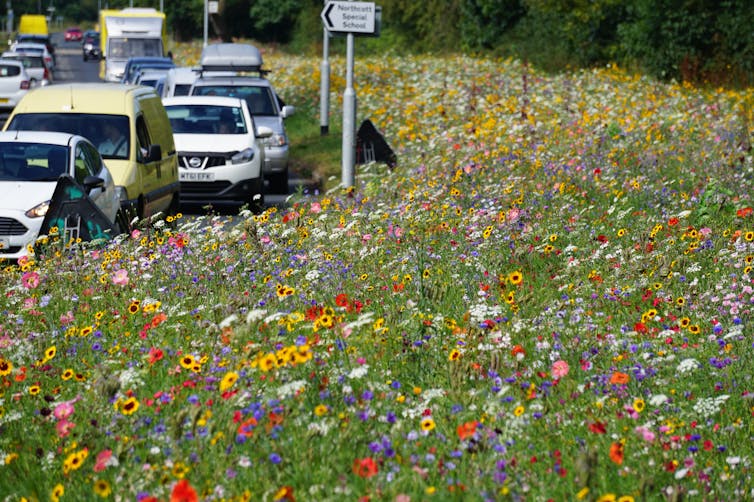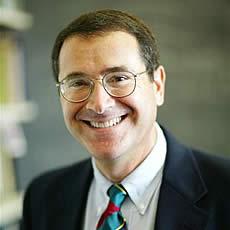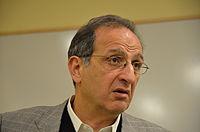Exploring the Human Figure: Klimt and Schiele at the Neue Galerie
This year marks the hundredth anniversary since the death of Gustav Klimt (1862-1918)
and Egon Schiele (1890-1918), two of Austria’s greatest artists. That same year, 1918,
also saw the end of the Austro-Hungarian Empire following its defeat in World War I –
the end, that is, of an entire era, of a world.
Fin de siècle Vienna was a place of extraordinary innovation – in music (with Arnold
Schoenberg and the Second Viennese School), in literature (with Modernists such as
Robert Musil and Herman Broch), in science (with Sigmund Freud and the development
of psychoanalysis), and, of course, the visual arts, with the founding of the Vienna
Secession in 1897, whose first president was Gustav Klimt. In Vienna, the rupture
caused by the war was total: the city became the archetype of “a doomed society, in
which brilliant achievements glowed in the gathering twilight.”
The Neue Galerie in New York City is celebrating the centenary with a concise but
captivating show highlighting the expressive and erotically charged draftsmanship of
Klimt and Schiele. In his 1908 manifesto, “Ornament and Crime” Adolf Loos famously
states that “All art is erotic.” Klimt was one of the main targets of Loos’ essay. Klimt’s
drawings were sometimes ancillary works and preparatory studies for major portraits –
but the drawings for which he is best known are independent studies of nude models.
These were women, either solitary or in couples, in often explicitly erotic poses, postures
and attitudes.
Klimt is the consummate painter of women. Men hardly seem to interest him at all: it is
the female form that is the persistent theme throughout Klimt’s work. The painter was
also a brilliant draughtsman and over three thousand drawings of his have survived. A
small but suggestive handful of these have made their way to the Neue Galerie’s thrilling
exhibition. As with Klimt’s Reclining Nude drawn in blue pencil, they are oftentimes
engaged in autoeroticism – and while the pictures are usually minimal in the way of
detail, Klimt’s graceful line is sufficient to give these works a delicate, genuine intimacy
and wonderfully alluring quality.
 Klimt’s Moving Water (1898) is a beautifully haunting oil painting; a dream-like vision
Klimt’s Moving Water (1898) is a beautifully haunting oil painting; a dream-like vision
featuring several slender female nudes who drift and glide within the water as though it
were their native element. Indeed, they could be Richard Wagner’s Rhine-maidens – an
association that is strengthened by the presence of a shadowy, menacing and wide-eyed
figure in the bottom right corner: perhaps he is the spurned dwarf Alberich, who
subsequently forswears love so he can obtain great power.
For Egon Schiele, Klimt was a friend and mentor. The story is that when they first met, the young artist showed Klimt some of his work and asked whether he had any talent. “Yes. Too much talent,” was the master’s reply. While there were critics in Vienna who shared this view, Schiele would still run afoul of the authorities, and in 1912 he was convicted of “infringing public morals” – specifically, allowing public accessibility to his nude studies – and sentenced to three days’ imprisonment. While in custody he would
make over a dozen watercolor drawings.
 For Schiele, art was a way of nurturing, and mending, a bruised and battered psyche. The
For Schiele, art was a way of nurturing, and mending, a bruised and battered psyche. The
Portrait of Painter Karl Zakovsek (1910) is, like so much of Schiele’s work, powerfully
gripping, and nearly impossible to pull one’s eyes away from; while at the same time, a
devastating work of art, it is almost physically painful to view. The subject was a friend
and fellow student at Vienna’s Art Academy. It is a portrait of dire poverty – evident
from the figures deathly thin body, and the fact that he wears no shirt under his vest. His
eyes are large, lost in dreams, sunken with heavy red lids, and the look of mortality about
them. The hands likewise suggest a cadaverous figure, whose end is near.
Reclining Semi-Nude (1911), a watercolor with gouache and pencil, presents us with a
female figure seen from the rear (in fact, her butt occupies the center of the picture), nude
below the waist and cut off below the knees. Schiele will often paint his subjects,
including himself, in a kind of mutilated fashion – with missing hands or feet. The artist’s
engagement with the body is sometimes, mistakenly, labeled as pornographic – in fact,
nothing could be further from the truth. Schiele is profoundly interested in sexuality and
does not shy away from genitalia and other erogenous zones – but he does not aim to be
titillating. He gives us the body unidealized: he glories in the real, the truth of the flesh –
the redness of the nipples, the swollen and exaggerated labia, and pubic hair – all are
depicted with an almost obsessive attention to detail. Indeed, sometimes it seems that
each wiry, spindly hair of the body is all-important to Schiele. “Even the most erotic
work of art has holiness!”
Several of Schiele’s self-portraits have been included in the show, highlighting how
important it was for him to look at himself with the mercilessly honest eye which he
brought to all his subjects. Schiele painted himself with a frequency, and more
importantly, with an unflinching candidness and directness that was unprecedented, and
to this day virtually without parallel. To be sure, many of these works, being as
uninhibited and revealing as they are, invariably generate a measure of discomfort in the
viewer who really looks at them. How many of us truly looks at ourselves in this way,
without pretense, without the safety of those comforting illusions that make living so
much easier?
T.S. Eliot once observed that nothing dies harder than the desire to think well of oneself:
I am reminded of this when I consider the fearlessness of Schiele’s brush, and how
completely he exposes himself – not simply in terms of his physical nudity, but in terms
of his emotional nakedness. Schiele lays it all out: painting becomes for him a mode of
self-revelation, a kind of metaphysical analysis of the self. His self-portraits can indeed
be frightening at times – and this is because what he sees is not always pretty, not always
easy to confront: one finds shame, anger, narcissism; as well as pride, and self-loathing; a
paradoxical mixture of innocence and lasciviousness.
Ultimately, even when Schiele paints himself in a mutilated and dismembered mode –
footless, for example – he is doing so to restore himself to wholeness and to health. Few
modern painters have observed and depicted with such intensity the alienation of the self
under conditions of modernity. Though he can be extremely disturbing in his exploration
of psychic depths, as he remarked “I want to tear into myself, so that I may create again a
new thing which I, in spite of myself, have perceived.”
The public has an opportunity to deepen their appreciation of these remarkable artists by
visiting the Met Breuer, which is currently presenting “Obsession: Nudes by Klimt,
Schiele, and Picasso”. The show offers a generous selection of Schiele, devoting several
rooms to his drawings and watercolors, including some of his most explicitly erotic
works - such as “Observed in a Dream” (1911). A “Woman Buttoning Her Shoes”
(1915), a charcoal on paper drawing, is one of many such works which demonstrate
Schiele’s mastery of the long unbroken line. This particular drawing is noteworthy
because the model is Edith Harms, who in 1915 married Schiele.
The day after Gustav Klimt died, in February of 1918, Schiele made three drawings of
him as his body lay in the hospital mortuary. In the autumn of that year, the pandemic of
Spanish influenza reached Vienna and Schiele’s pregnant wife, Edith, died in October.
Three days later it took the artist: “The war is over, and I must go” Schiele’s last words
bring together the historical and the personal, the social and the individual. The end of the
war also marked the end of the world to which he and Klimt belonged. Ultimately, the
exhibition reveals two artists for whom the human form was the key to exploring the
great mystery of being – or as Schiele stated: “The figure is after all the most essential,
what gives me the greatest satisfaction, the human body.”
















